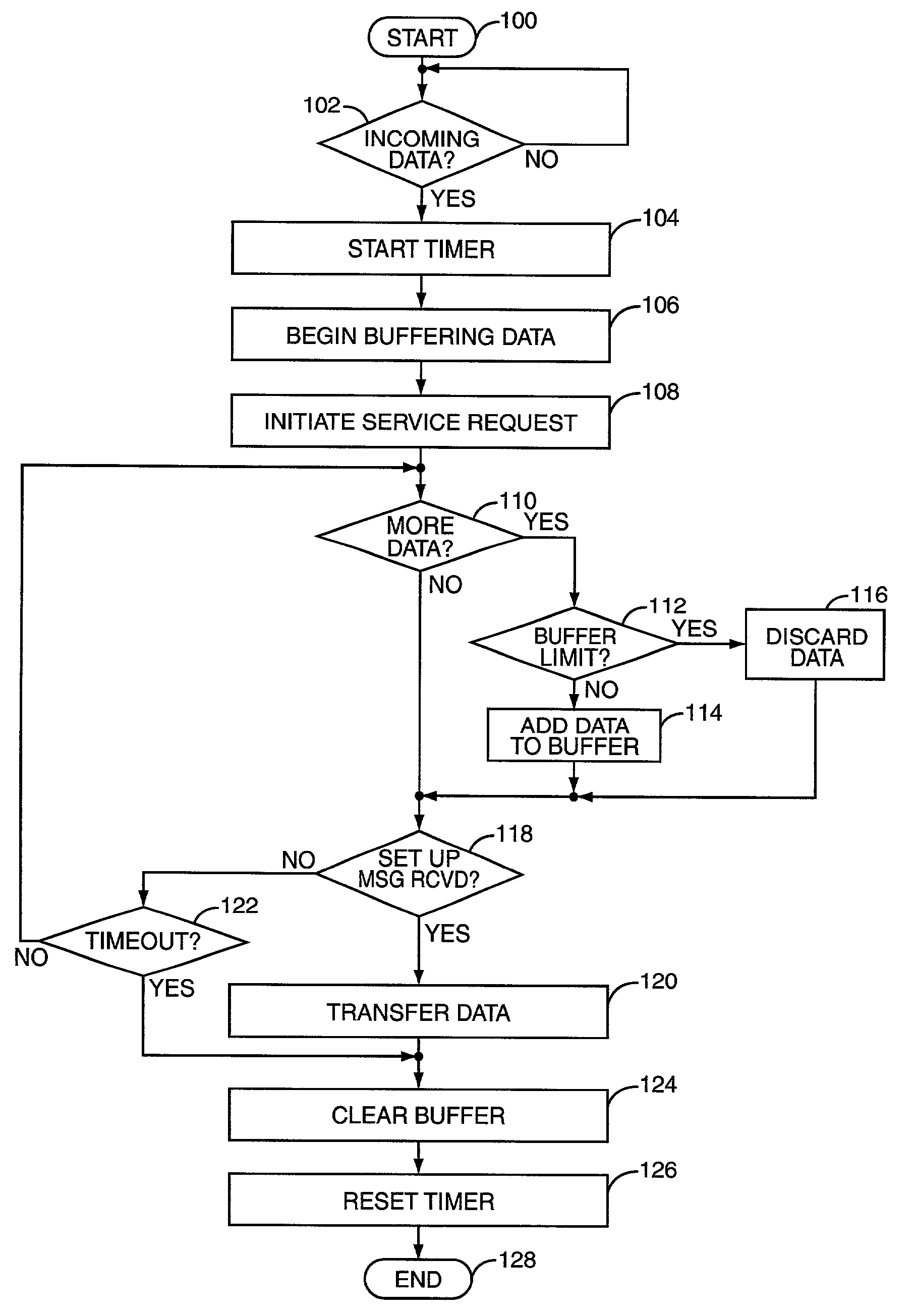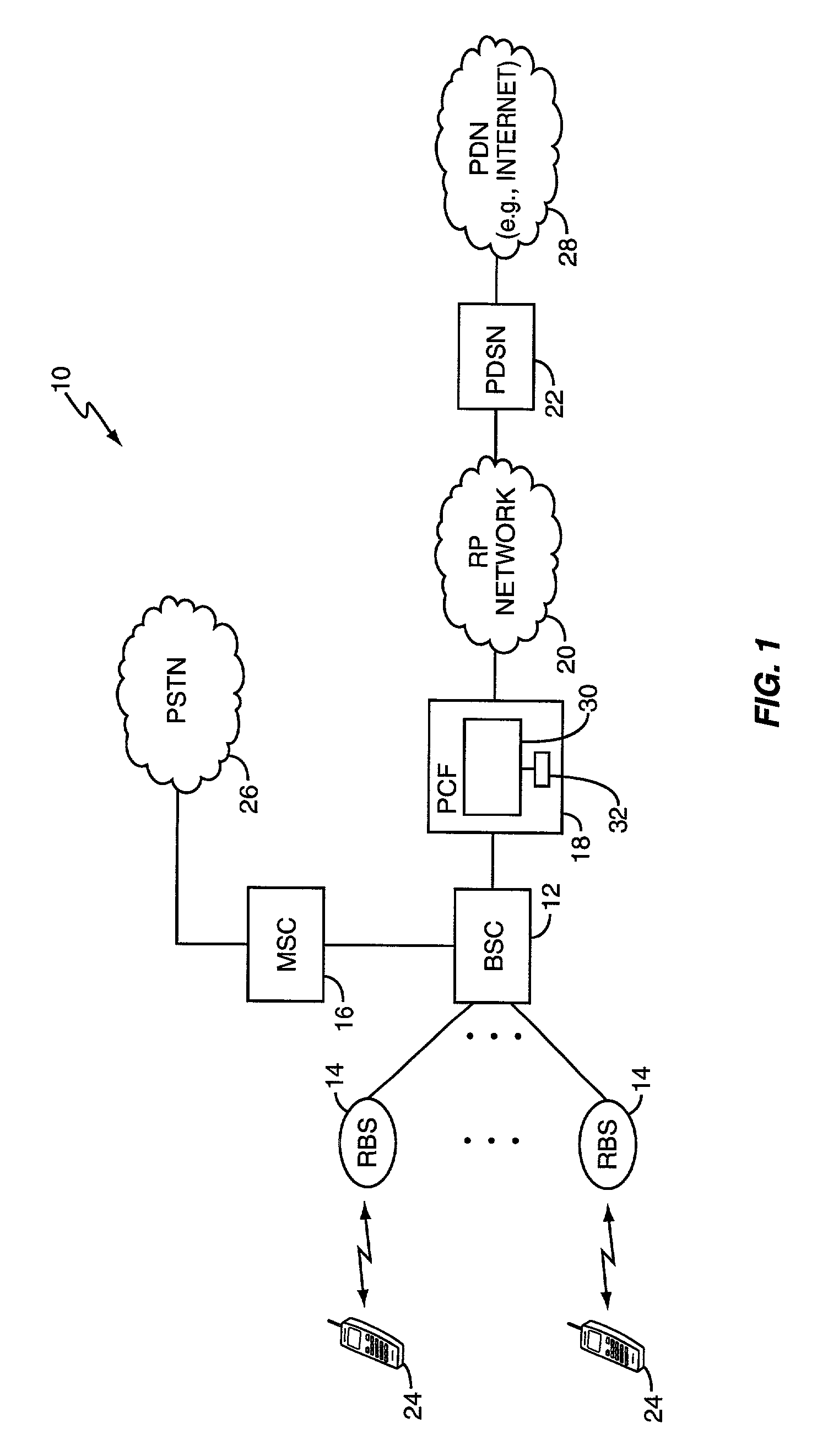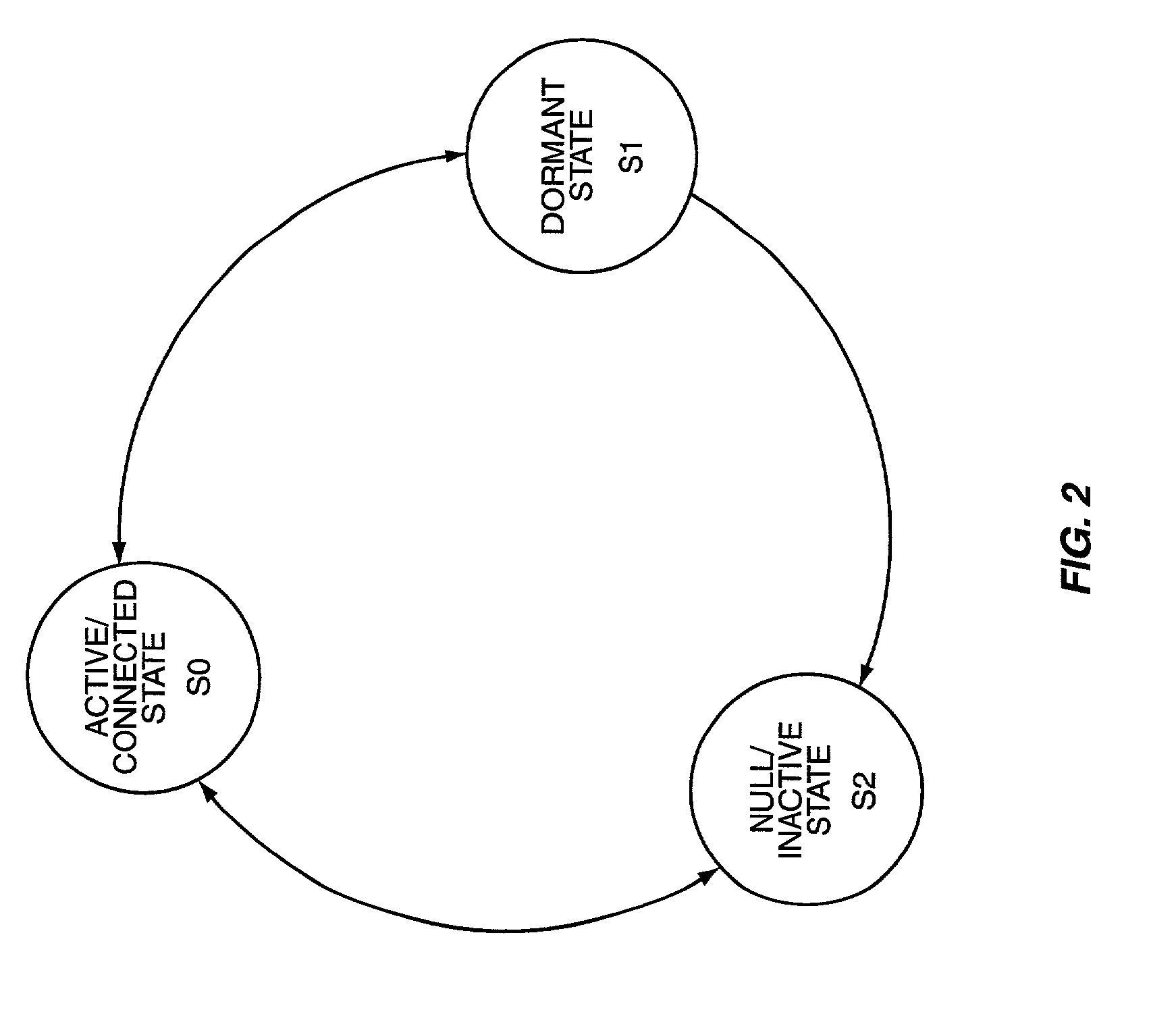System and method for management of data associated with a dormant mobile terminal
a mobile terminal and data management technology, applied in data switching networks, high-level techniques, wireless commuication services, etc., can solve the problems of prematurely issuing one or more additional reactivation requests, limited physical memory needed at the pcf for data buffering, etc., to reduce network signaling overhead, and limit the amount of memory used
- Summary
- Abstract
- Description
- Claims
- Application Information
AI Technical Summary
Benefits of technology
Problems solved by technology
Method used
Image
Examples
Embodiment Construction
[0015]FIG. 1 illustrates an exemplary wireless communication network generally described by the numeral 10, and comprising a base station controller (BSC) 12, one or more radio base stations (RBSs) 14, a mobile switching center (MSC) 16, a packet control function (PCF) 18, a radio-packet (RP) network 20, and a packet data serving node (PDSN) 22. In actuality, the network 10 may include one or more of any of the above-named entities, and may include additional entities not shown in this simplified illustration.
[0016]The BSC 12 controls RBSs 14, which communicate via RF signaling through the air interface with one or more mobile terminals 24. Mobile terminal users may communicate with users of the public switched telephone network (PSTN) 26 via the MSC 16, and may communicate with one or more public data networks (PDNs) 28, such as the Internet, via the PDSN 22. When a user communicates with the PSTN 26, the BSC 12 cooperates with the MSC 16 in setting up the call, which entails alloc...
PUM
 Login to View More
Login to View More Abstract
Description
Claims
Application Information
 Login to View More
Login to View More - R&D
- Intellectual Property
- Life Sciences
- Materials
- Tech Scout
- Unparalleled Data Quality
- Higher Quality Content
- 60% Fewer Hallucinations
Browse by: Latest US Patents, China's latest patents, Technical Efficacy Thesaurus, Application Domain, Technology Topic, Popular Technical Reports.
© 2025 PatSnap. All rights reserved.Legal|Privacy policy|Modern Slavery Act Transparency Statement|Sitemap|About US| Contact US: help@patsnap.com



